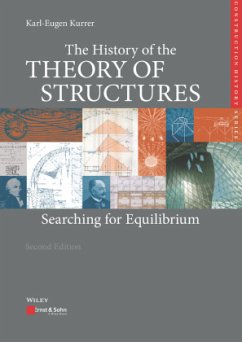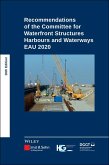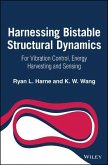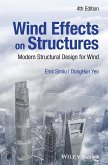Zehn Jahre nach der 1. Auflage in englischer Sprache legt der Autor sein Buch The History of the Theory of Structures in wesentlich erweiterter Form vor, nunmehr mit dem Untertitel Searching for Equilibrium. Mit dem vorliegenden Buch lädt der Verfasser seine Leser zur Suche nach dem Gleichgewicht von Tragwerken auf Zeitreisen ein. Die Zeitreisen setzen mit der Entstehung der Statik und Festigkeitslehre eines Leonardo und Galilei ein und erreichen ihren ersten Höhepunkt mit den baustatischen Theorien über den Balken, Erddruck und das Gewölbe von Coulomb am Ende des 18. Jahrhunderts. Im folgenden Jahrhundert formiert sich die Baustatik mit Navier, Culmann, Maxwell, Rankine, Mohr, Castigliano und Müller-Breslau zu einer technikwissenschaftlichen Grundlagendisziplin, die im 20. Jahrhundert in Gestalt der modernen Strukturmechanik bei der Herausbildung der konstruktiven Sprache des Stahl-, Stahlbeton-, Flugzeug-, Automobil- und des Schiffbaus eine tragende Rolle spielt. Dabei setzt der Autor den inhaltlichen Schwerpunkt auf die Formierung und Entwicklung moderner numerischer Ingenieurmethoden wie der Finite-Elemente-Methode und beschreibt ihre disziplinäre Integration in der Computational Mechanics.
Kurze, durch historische Skizzen unterstützte Einblicke in gängige Berechnungsverfahren erleichtern den Zugang zur Geschichte der Strukturmechanik und Erddrucktheorie vom heutigen Stand der Ingenieurpraxis und stellen einen auch einen wichtigen Beitrag zur Ingenieurpädagogik dar.
Dem Autor gelingt es, die Unterschiedlichkeit der Akteure hinsichtlich ihres technisch-wissenschaftlichen Profils und ihrer Persönlichkeit plastisch zu schildern und das Verständnis für den gesellschaftlichen Kontext zu erzeugen. So werden in 260 Kurzbiografien die subjektive Dimension der Baustatik und der Strukturmechanik von der frühen Neuzeit bis heute entfaltet. Dabei werden die wesentlichen Beiträge der Protagonisten der Baustatik besprochen und in die nachfolgende Bibliografie integriert. Berücksichtigt wurden nicht nur Bauingenieure und Architekten, sondern auch Mathematiker, Physiker, Maschinenbauer sowie Flugzeug- und Schiffbauer. Neben den bekannten Persönlichkeiten der Baustatik, wie Coulomb, Culmann, Maxwell, Mohr, Müller-Breslau, Navier, Rankine, Saint-Venant, Timoshenko und Westergaard, wurden u. a. auch G. Green, A. N. Krylov, G. Li, A. J. S. Pippard, W. Prager, H. A. Schade, A. W. Skempton, C. A. Truesdell, J. A. L. Waddell und H. Wagner berücksichtigt. Den Wegbereitern der Moderne in der Baustatik J. H. Argyris, R. W. Clough, Th. v. Kármán, M. J. Turner und O. C. Zienkiewicz wurden umfangreiche Biografien gewidmet. Eine ca. 4500 Titel umfassende Bibliografie rundet das Werk ab.
Neue Inhalte der 2. Auflage sind: Erddrucktheorie, Traglastverfahren, historische Lehrbuchanalyse, Stahlbrückenbau, Leichtbau, Platten- und Schalentheorie, Greensche Funktion, Computerstatik, FEM, Computergestützte Graphostatik und Historische Technikwissenschaft. Gegenüber der 1., englischen Ausgabe wurde der Seitenumfang um 50 % auf nunmehr etwas über 1200 Druckseiten gesteigert.
Das vorliegende Buch ist die erste zusammenfassende historische Gesamtdarstellung der Baustatik vom 16. Jahrhundert bis heute.
Über die Reihe edition Bautechnikgeschichte:
Mit erstaunlicher Dynamik hat sich die Bautechnikgeschichte in den vergangenen Jahrzehnten zu einer höchst lebendigen, international vernetzten und viel beachteten eigenständigen Disziplin entwickelt. Auch wenn die nationalen Forschungszugänge unterschiedliche Akzente setzen, eint sie doch das Bewusstsein, dass gerade die inhaltliche und methodische Vielfalt und das damit verbundene synthetische Potenzial die Stärke des neuen Forschungsfeldes ausmachen. Bautechnikgeschichte erschließt neue Formen des Verstehens von Bauen zwischen Ingenieurwesen und Architektur, zwischen Bau- und Kunst-, Technik- und Wissenschaftsgeschichte.
Mit der edition Bautechnikgeschichte erhält die neue Disziplin ers
Kurze, durch historische Skizzen unterstützte Einblicke in gängige Berechnungsverfahren erleichtern den Zugang zur Geschichte der Strukturmechanik und Erddrucktheorie vom heutigen Stand der Ingenieurpraxis und stellen einen auch einen wichtigen Beitrag zur Ingenieurpädagogik dar.
Dem Autor gelingt es, die Unterschiedlichkeit der Akteure hinsichtlich ihres technisch-wissenschaftlichen Profils und ihrer Persönlichkeit plastisch zu schildern und das Verständnis für den gesellschaftlichen Kontext zu erzeugen. So werden in 260 Kurzbiografien die subjektive Dimension der Baustatik und der Strukturmechanik von der frühen Neuzeit bis heute entfaltet. Dabei werden die wesentlichen Beiträge der Protagonisten der Baustatik besprochen und in die nachfolgende Bibliografie integriert. Berücksichtigt wurden nicht nur Bauingenieure und Architekten, sondern auch Mathematiker, Physiker, Maschinenbauer sowie Flugzeug- und Schiffbauer. Neben den bekannten Persönlichkeiten der Baustatik, wie Coulomb, Culmann, Maxwell, Mohr, Müller-Breslau, Navier, Rankine, Saint-Venant, Timoshenko und Westergaard, wurden u. a. auch G. Green, A. N. Krylov, G. Li, A. J. S. Pippard, W. Prager, H. A. Schade, A. W. Skempton, C. A. Truesdell, J. A. L. Waddell und H. Wagner berücksichtigt. Den Wegbereitern der Moderne in der Baustatik J. H. Argyris, R. W. Clough, Th. v. Kármán, M. J. Turner und O. C. Zienkiewicz wurden umfangreiche Biografien gewidmet. Eine ca. 4500 Titel umfassende Bibliografie rundet das Werk ab.
Neue Inhalte der 2. Auflage sind: Erddrucktheorie, Traglastverfahren, historische Lehrbuchanalyse, Stahlbrückenbau, Leichtbau, Platten- und Schalentheorie, Greensche Funktion, Computerstatik, FEM, Computergestützte Graphostatik und Historische Technikwissenschaft. Gegenüber der 1., englischen Ausgabe wurde der Seitenumfang um 50 % auf nunmehr etwas über 1200 Druckseiten gesteigert.
Das vorliegende Buch ist die erste zusammenfassende historische Gesamtdarstellung der Baustatik vom 16. Jahrhundert bis heute.
Über die Reihe edition Bautechnikgeschichte:
Mit erstaunlicher Dynamik hat sich die Bautechnikgeschichte in den vergangenen Jahrzehnten zu einer höchst lebendigen, international vernetzten und viel beachteten eigenständigen Disziplin entwickelt. Auch wenn die nationalen Forschungszugänge unterschiedliche Akzente setzen, eint sie doch das Bewusstsein, dass gerade die inhaltliche und methodische Vielfalt und das damit verbundene synthetische Potenzial die Stärke des neuen Forschungsfeldes ausmachen. Bautechnikgeschichte erschließt neue Formen des Verstehens von Bauen zwischen Ingenieurwesen und Architektur, zwischen Bau- und Kunst-, Technik- und Wissenschaftsgeschichte.
Mit der edition Bautechnikgeschichte erhält die neue Disziplin ers
About this Edition
"[...] K.-E. Kurrer's book is a compreshensive treatise on the theories that are used for analysis and design of structures from the earliest days (Archimedes' lever principle) to the present (finite element method). Those who have read the first edition of the book will be surprised by the huge amount of history and knowledge which has been added in the second edition. One can still read the individual chapters in isolation without losing the broad view on the total. The book is well illustrated with pictures, graphs, historical drawings and sketches, which makes for entertaining reading. It contains a wealth of information and is therefore a source for historians, especially interested in the history of technology, but also for professional engineers and graduate students of engineering and art history. The book is a necessary element of libraries and engineering departments."
em. Prof. Dr.-Ing. Dr. h.c. Dr. E.h. Hans-Wolf Reinhardt, University of Stuttgart, Germany (RILEM's website: www.rilem.net, July 2018)
"(...) Der Rezensent empfiehlt vorliegendes Buch wärmstens - auch den Lesern in Polen.
Bauingenieure, Architekten und Umweltingenieure und Studierende der genannten Disziplinen
finden dort zahlreiche Anregungen zum Nachdenken."
Prof. dr hab. inz. Zbigniew Cywinski in "Inzynieria Morska i Geotechnika", 4/2018, S. 313:
About the First English edition 2008
"[...] Ultimately, this is an extraordinary book that should be in every engineering library and on the bookshelf of every structural engineer who aspires to make a difference in the design, development, and preservation of civil infrastructure."
Prof. Sashi K. Kunnath, University of California, Davis, USA (Journal of Structural Engineering, March 2009, pp. 330-331)
"[...] Kurrer's achievement in compiling this book is colossal, and I commend it to anyone interested in the subject. It will, for a long time, stand well along side the other classics of the field - Timoshenko's "History of Strength of Materials", and Eduardo Benvenuto's "Introduction to the History of Structural Mechanics". [...]"
Dr. Bill Addis, Buro Happold, London, UK (International Journal of Space Structures, Vol. 23, No. 3, July 2008, p. 194)
"[...] As you can tell from my enthusiasm, I recommend this highly original study, first as a pleasure to read and a thoughtful examination of new avenues to explain the development of human understanding, and also as an aid and inspiration for further research."
Prof. Dr. Tom F. Peters, Lehigh University, USA (Technology and Culture, July 2009, Vol. 50, pp. 669-674)
"[...] Kurrer's book is truly a masterpiece. In the 800-plus pages, one finds no end of new and interesting pieces of information that contribute to the history of the theory of structures. [...]"
Prof. Dr. Harry H. West, The Pennsylvania State University, USA (Journal of Architectural Engineering, Vol. 14, Issue 4, December 2008, p. 130)
"[...] Whenever you want to learn about the subject or just want to browse through history - this is the book! It is certainly a must for every historically interested engineer as well as for historians of science. "The Kurrer" will become the standard reference book and will stay in that position for many years to come."
Prof. Dr. Thomas Sonar, Institute of Computational Mathematics, Technische Universität Braunschweig, Germany (ZAMP The Journal of Applied Mathematics and Physics, Vol. 60 (2009), p. 581)
"[...] German publisher Ernst & Sohn has brought to the English-speaking public this substantial monograph by Karl-Eugen Kurrer, which is a revised and considerably extended version of the highly successful 2002 German edition Geschichte der Baustatik. The additional content, especially the inclusion of more international developments, makes this book of truly worldwide significance."
Prof. Dr. Andreas Kahlow, Berlin, Germany (Proceedings of the Institution of Civil Engineers - Engineering History and Heritage, Vol. 164, February 2011, Issue 1, p. 55)
"[...] For the time span covered (1575 to the present), this is the most complete recent book on the topic of methods of structural engineering design [...]."
Prof. Dr. Thomas Boothby, The Pennsylvania State University, USA (Isis (History of Science Society), Vol. 100, Issue 3, pp. 639-640 (September 2009))
"[...] The book certainly contains a wealth of interesting information, and I believe that every department of structural engineering ought to have a copy on its shelves."
Prof. Dr. Kolbein Bell, Department of Structural Engineering, Norwegian University of Science and Technology, Trondheim, Norway (Marine Structures, Vol. 22, 2009, pp. 855-856)
"[...] The book contains a wealth of information and will be an important reference text for engineers and historians who wish to understand or write about any specific aspect of the history of structures. Especially, those who teach this subject should find this book to be a rich source of information. It does much more than to discuss the science, however, because we meet the major figures who played significant roles and we learn much about them personally. [...]"
Dr. Hubert I. Flomenhoft, Palm Beach Gardens, Florida, USA (Progress in Aerospace Sciences, Vol. 45, 2009, pp. 80-81)
"[...] Undoubtedly for many readers Kurrer's book represent an excellent opportunity to gain different perspectives and to broaden horizons. For others it will simply be a pleasure to browse and read, and tobe reminded of structural engineering's incredible intellectual underpinnings. Highly recommended."
Prof. Dr. Robert Melchers, University of Newcastle, Callaghan, Australia (Australian Journal of Structural Engineering 2008, Vol. 8, No. 3, p. 259)
"[...] The author had twin goals in writing this book. One was the history of the development of structural engineering in detail, the second was to provide a didactic scientific theory, construction history, and biographical and bibliographic perspective, providing a union between science and the humanities. This goal has succeeded in large measure due to [...] Kurrer's knowledge of the subject and his ability in organizing the material. The English translation from the original German is very good, with only a few typographical errors and solecisms."
Dr. Ralph Francis, University of New Brunswick, Canada (Canadian Journal of Civil Engineering 2008, Vol. 35, pp. 1486-1487)
"[...] Kurrers book is fascinating and it has already become part of my teaching. I would like to recommend it not only to students and civil engineers; it is of great interest to all interested in load-bearing structures, wherever in aerospace engineering, mechanical engineering, sport-equipment industry, etc. It is an opus of uniqueness."
Prof. Dr.-Ing. habil. Norbert Gebbeken, University of armed forces, Munich, Germany (ZAMM Journal of Applied Mathematics and Mechanics, Vol. 88, No. 10, October 2008, p. 792)
"[...] It is clear that Dr. Kurrer has succeeded in combining the rigorous and the romantic in a work that should become classic reading for the discerning mechanician, engineer and architect.[...]"
Prof. Dr. Milija N. Pavlovic, Imperial College London, UK (Engineering Structures, 2008, Vol. 30, p. 2957)
"[...] The history of structural engineering was started by Todhunter and Pearson, and continued by Timoshenko in his "History of Strength of Materials" dating from 1953 (already available in Japanese). After that, half a century passed before this author, based in Europe, presented us with very many original documents that may well attract readers to explore the science of the history of structural engineering by reading this book."
em. Prof. Dr.Eng. Minoru Yamada, Kobe University, Japan (Journal of Architecture and Building Science, Vol. 123 (1582), 2008, No. 11, p. 77)
"[...] It is the first to offer an overview of the development from the conventional structural theory to structural and computional mechanics during the last century. Brief summaries of the development of common calculation methods, supported by historic sketches, provides insides to the history of structural mechanics and present-day calculation methods."
Dipl.-Ing. Dietmar Rippegather, Editor-in-Chief "Welding and Cutting" (Welding and Cutting, 5/2008, p. 314)
"[...] It would form a valuable resource in any library concerned with the history of structures or development of structural theories and methods, and a reference work for any teacher and student in this areas."
Peter R Smith, MArch PhD Sydney, FAIA, University of Sydney, Australia (Architectural Science Review, Volume 51, Number 4, December 2008, pp. 415-416)
"[...] this book is an outstanding achievement of its author since it illustrates the history of the theory of structures, throughout ages, from its very beginnings until the present day. It can be a very good help in teaching of structural mechanics and of some related subjects. Surely, it puts a substantial impact on the proper development of civil engineering students and their teachers. Also, it is valuable for the practising engineers, who can enlarge their professional and intellectual qualities. Certainly, they will find the importance of knowledge passing from one generation to another [...]."
Prof. Dr. hab. Inz. Zbigniew Cywinski, Gdansk University of Technology, Poland (Archives of Civil Engineering, Vol. LIV, 2008, Issue 3, p. 650)
"[...] This book offers fascinating insights into the emergence of theory of structures and structural analysis itself on various levels. [...]"
Dr.-Ing. Holger Eggemann, Hegger+Partner Ingenieure, Aachen (Steel Construction - Design and Research, Vol. 1, Sept. 2008, Issue 1, p. 93)
"[...] Kurrer offers us a highly interesting work on a fascinating subject, carefully and detailed explained, which may help all engineers and scientist to find the historical roots of science. In particular, this book will be highly welcome to all teachers in the field of mechanics."
Prof. Dr.-Ing. Albrecht Bertram, chair of Strength of Materials, Otto von Guericke University Magdeburg, Germany (Technische Mechanik, Vol. 30, 2010, Issue 4, p. 414)
"[...] The structure of the book makes it a joy to read, for its avoids the sequential approach taken in many histories in favour of a thematic approach which allows the reader to follow the key themes in depth without being sidetracked by developments in unrelated fields. The author also provides a well-balanced narrative of mathematical details, practical engineering, and the people themselves involved with various aspects of the history of structural theory."
Dr. Bill Addis, Buro Happold, London, UK (CONSTRUCTION HISTORY - Journal of the Construction History Society, Vol. 23 (2008), pp. 138-139)
"[...] An encyclopaedic work of this extension and completeness has never been published before, and one is amazed that it has been the fruit of the culture and the patience of a single scholar."
Prof. Dr. Piero Villaggio, Dipartimento Ingegneria Strutturale, Università di Pisa, Italy (Journal of Elasticity, Sept. 2008, Vol. 93, pp. 199-202)
"[...] This unique book, written by an expert on the subject, presents an authoritative account of the history of the theory of structures. The author presents the historical developments with a critical spirit and philosophical perspective. The book is well written and organized. It is highly recommended to the engineer, the teacher, the scientist and the researcher who is interested in the historical developments of the evolution of the theory of structures."
Prof. Dr. Emmanuel E. Gdoutos, Democritus University of Thrace, Xanthi, Greece (Strain, Vol. 45, Issue 4, pp. 387-388 (August 2009))
"[...] K.-E. Kurrer's book is a compreshensive treatise on the theories that are used for analysis and design of structures from the earliest days (Archimedes' lever principle) to the present (finite element method). Those who have read the first edition of the book will be surprised by the huge amount of history and knowledge which has been added in the second edition. One can still read the individual chapters in isolation without losing the broad view on the total. The book is well illustrated with pictures, graphs, historical drawings and sketches, which makes for entertaining reading. It contains a wealth of information and is therefore a source for historians, especially interested in the history of technology, but also for professional engineers and graduate students of engineering and art history. The book is a necessary element of libraries and engineering departments."
em. Prof. Dr.-Ing. Dr. h.c. Dr. E.h. Hans-Wolf Reinhardt, University of Stuttgart, Germany (RILEM's website: www.rilem.net, July 2018)
"(...) Der Rezensent empfiehlt vorliegendes Buch wärmstens - auch den Lesern in Polen.
Bauingenieure, Architekten und Umweltingenieure und Studierende der genannten Disziplinen
finden dort zahlreiche Anregungen zum Nachdenken."
Prof. dr hab. inz. Zbigniew Cywinski in "Inzynieria Morska i Geotechnika", 4/2018, S. 313:
About the First English edition 2008
"[...] Ultimately, this is an extraordinary book that should be in every engineering library and on the bookshelf of every structural engineer who aspires to make a difference in the design, development, and preservation of civil infrastructure."
Prof. Sashi K. Kunnath, University of California, Davis, USA (Journal of Structural Engineering, March 2009, pp. 330-331)
"[...] Kurrer's achievement in compiling this book is colossal, and I commend it to anyone interested in the subject. It will, for a long time, stand well along side the other classics of the field - Timoshenko's "History of Strength of Materials", and Eduardo Benvenuto's "Introduction to the History of Structural Mechanics". [...]"
Dr. Bill Addis, Buro Happold, London, UK (International Journal of Space Structures, Vol. 23, No. 3, July 2008, p. 194)
"[...] As you can tell from my enthusiasm, I recommend this highly original study, first as a pleasure to read and a thoughtful examination of new avenues to explain the development of human understanding, and also as an aid and inspiration for further research."
Prof. Dr. Tom F. Peters, Lehigh University, USA (Technology and Culture, July 2009, Vol. 50, pp. 669-674)
"[...] Kurrer's book is truly a masterpiece. In the 800-plus pages, one finds no end of new and interesting pieces of information that contribute to the history of the theory of structures. [...]"
Prof. Dr. Harry H. West, The Pennsylvania State University, USA (Journal of Architectural Engineering, Vol. 14, Issue 4, December 2008, p. 130)
"[...] Whenever you want to learn about the subject or just want to browse through history - this is the book! It is certainly a must for every historically interested engineer as well as for historians of science. "The Kurrer" will become the standard reference book and will stay in that position for many years to come."
Prof. Dr. Thomas Sonar, Institute of Computational Mathematics, Technische Universität Braunschweig, Germany (ZAMP The Journal of Applied Mathematics and Physics, Vol. 60 (2009), p. 581)
"[...] German publisher Ernst & Sohn has brought to the English-speaking public this substantial monograph by Karl-Eugen Kurrer, which is a revised and considerably extended version of the highly successful 2002 German edition Geschichte der Baustatik. The additional content, especially the inclusion of more international developments, makes this book of truly worldwide significance."
Prof. Dr. Andreas Kahlow, Berlin, Germany (Proceedings of the Institution of Civil Engineers - Engineering History and Heritage, Vol. 164, February 2011, Issue 1, p. 55)
"[...] For the time span covered (1575 to the present), this is the most complete recent book on the topic of methods of structural engineering design [...]."
Prof. Dr. Thomas Boothby, The Pennsylvania State University, USA (Isis (History of Science Society), Vol. 100, Issue 3, pp. 639-640 (September 2009))
"[...] The book certainly contains a wealth of interesting information, and I believe that every department of structural engineering ought to have a copy on its shelves."
Prof. Dr. Kolbein Bell, Department of Structural Engineering, Norwegian University of Science and Technology, Trondheim, Norway (Marine Structures, Vol. 22, 2009, pp. 855-856)
"[...] The book contains a wealth of information and will be an important reference text for engineers and historians who wish to understand or write about any specific aspect of the history of structures. Especially, those who teach this subject should find this book to be a rich source of information. It does much more than to discuss the science, however, because we meet the major figures who played significant roles and we learn much about them personally. [...]"
Dr. Hubert I. Flomenhoft, Palm Beach Gardens, Florida, USA (Progress in Aerospace Sciences, Vol. 45, 2009, pp. 80-81)
"[...] Undoubtedly for many readers Kurrer's book represent an excellent opportunity to gain different perspectives and to broaden horizons. For others it will simply be a pleasure to browse and read, and tobe reminded of structural engineering's incredible intellectual underpinnings. Highly recommended."
Prof. Dr. Robert Melchers, University of Newcastle, Callaghan, Australia (Australian Journal of Structural Engineering 2008, Vol. 8, No. 3, p. 259)
"[...] The author had twin goals in writing this book. One was the history of the development of structural engineering in detail, the second was to provide a didactic scientific theory, construction history, and biographical and bibliographic perspective, providing a union between science and the humanities. This goal has succeeded in large measure due to [...] Kurrer's knowledge of the subject and his ability in organizing the material. The English translation from the original German is very good, with only a few typographical errors and solecisms."
Dr. Ralph Francis, University of New Brunswick, Canada (Canadian Journal of Civil Engineering 2008, Vol. 35, pp. 1486-1487)
"[...] Kurrers book is fascinating and it has already become part of my teaching. I would like to recommend it not only to students and civil engineers; it is of great interest to all interested in load-bearing structures, wherever in aerospace engineering, mechanical engineering, sport-equipment industry, etc. It is an opus of uniqueness."
Prof. Dr.-Ing. habil. Norbert Gebbeken, University of armed forces, Munich, Germany (ZAMM Journal of Applied Mathematics and Mechanics, Vol. 88, No. 10, October 2008, p. 792)
"[...] It is clear that Dr. Kurrer has succeeded in combining the rigorous and the romantic in a work that should become classic reading for the discerning mechanician, engineer and architect.[...]"
Prof. Dr. Milija N. Pavlovic, Imperial College London, UK (Engineering Structures, 2008, Vol. 30, p. 2957)
"[...] The history of structural engineering was started by Todhunter and Pearson, and continued by Timoshenko in his "History of Strength of Materials" dating from 1953 (already available in Japanese). After that, half a century passed before this author, based in Europe, presented us with very many original documents that may well attract readers to explore the science of the history of structural engineering by reading this book."
em. Prof. Dr.Eng. Minoru Yamada, Kobe University, Japan (Journal of Architecture and Building Science, Vol. 123 (1582), 2008, No. 11, p. 77)
"[...] It is the first to offer an overview of the development from the conventional structural theory to structural and computional mechanics during the last century. Brief summaries of the development of common calculation methods, supported by historic sketches, provides insides to the history of structural mechanics and present-day calculation methods."
Dipl.-Ing. Dietmar Rippegather, Editor-in-Chief "Welding and Cutting" (Welding and Cutting, 5/2008, p. 314)
"[...] It would form a valuable resource in any library concerned with the history of structures or development of structural theories and methods, and a reference work for any teacher and student in this areas."
Peter R Smith, MArch PhD Sydney, FAIA, University of Sydney, Australia (Architectural Science Review, Volume 51, Number 4, December 2008, pp. 415-416)
"[...] this book is an outstanding achievement of its author since it illustrates the history of the theory of structures, throughout ages, from its very beginnings until the present day. It can be a very good help in teaching of structural mechanics and of some related subjects. Surely, it puts a substantial impact on the proper development of civil engineering students and their teachers. Also, it is valuable for the practising engineers, who can enlarge their professional and intellectual qualities. Certainly, they will find the importance of knowledge passing from one generation to another [...]."
Prof. Dr. hab. Inz. Zbigniew Cywinski, Gdansk University of Technology, Poland (Archives of Civil Engineering, Vol. LIV, 2008, Issue 3, p. 650)
"[...] This book offers fascinating insights into the emergence of theory of structures and structural analysis itself on various levels. [...]"
Dr.-Ing. Holger Eggemann, Hegger+Partner Ingenieure, Aachen (Steel Construction - Design and Research, Vol. 1, Sept. 2008, Issue 1, p. 93)
"[...] Kurrer offers us a highly interesting work on a fascinating subject, carefully and detailed explained, which may help all engineers and scientist to find the historical roots of science. In particular, this book will be highly welcome to all teachers in the field of mechanics."
Prof. Dr.-Ing. Albrecht Bertram, chair of Strength of Materials, Otto von Guericke University Magdeburg, Germany (Technische Mechanik, Vol. 30, 2010, Issue 4, p. 414)
"[...] The structure of the book makes it a joy to read, for its avoids the sequential approach taken in many histories in favour of a thematic approach which allows the reader to follow the key themes in depth without being sidetracked by developments in unrelated fields. The author also provides a well-balanced narrative of mathematical details, practical engineering, and the people themselves involved with various aspects of the history of structural theory."
Dr. Bill Addis, Buro Happold, London, UK (CONSTRUCTION HISTORY - Journal of the Construction History Society, Vol. 23 (2008), pp. 138-139)
"[...] An encyclopaedic work of this extension and completeness has never been published before, and one is amazed that it has been the fruit of the culture and the patience of a single scholar."
Prof. Dr. Piero Villaggio, Dipartimento Ingegneria Strutturale, Università di Pisa, Italy (Journal of Elasticity, Sept. 2008, Vol. 93, pp. 199-202)
"[...] This unique book, written by an expert on the subject, presents an authoritative account of the history of the theory of structures. The author presents the historical developments with a critical spirit and philosophical perspective. The book is well written and organized. It is highly recommended to the engineer, the teacher, the scientist and the researcher who is interested in the historical developments of the evolution of the theory of structures."
Prof. Dr. Emmanuel E. Gdoutos, Democritus University of Thrace, Xanthi, Greece (Strain, Vol. 45, Issue 4, pp. 387-388 (August 2009))








